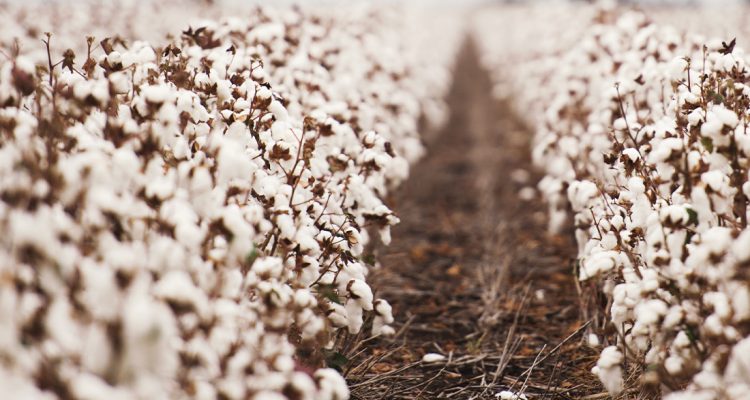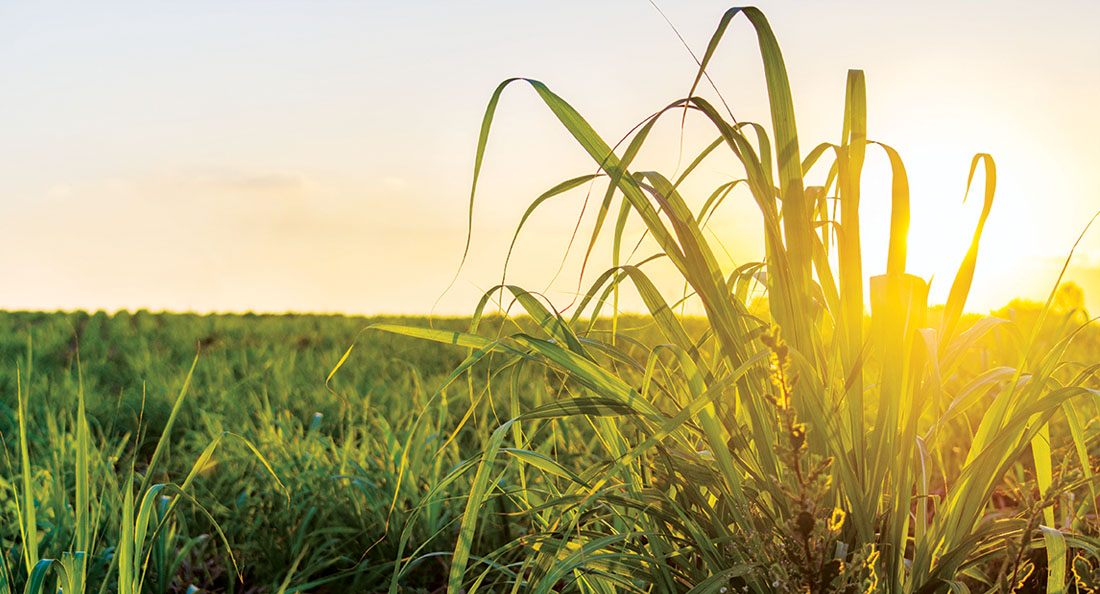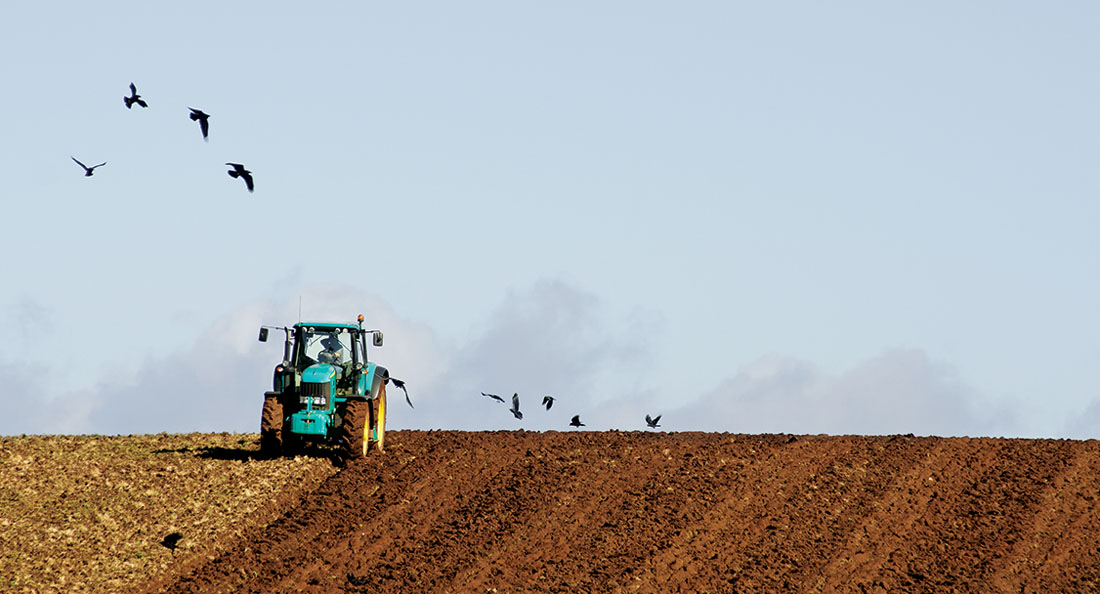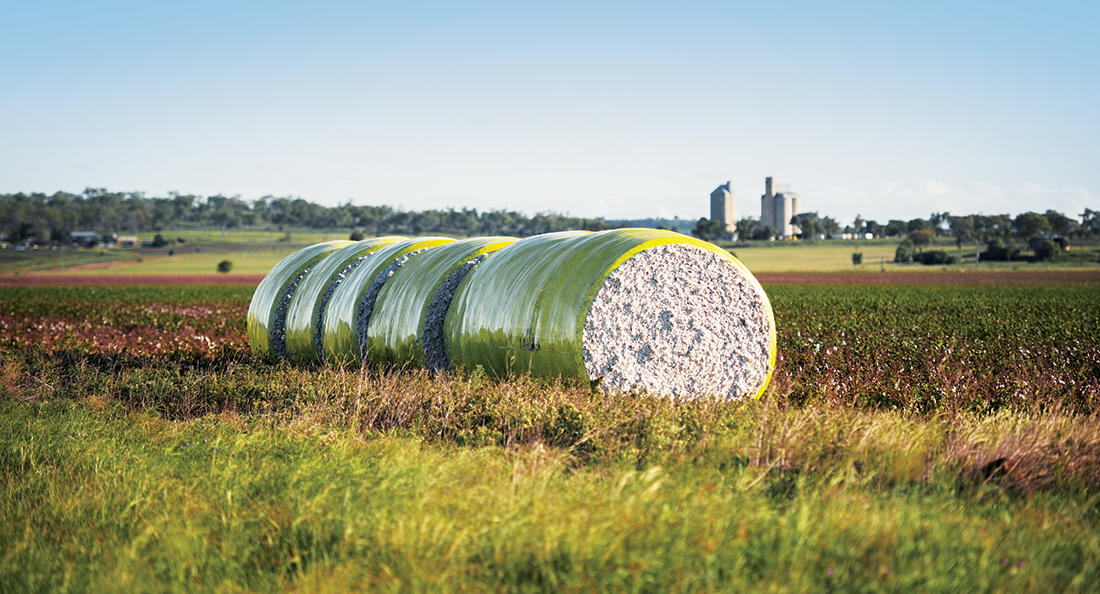With around 1500 cotton farms in operation, across more than 150 regional Australian communities, Australia is the largest producer of raw cotton in the world. The regions with the most ideal cotton growing conditions can be found mainly in New South Wales and Queensland, with smaller operations located in Victoria, Western Australia, and the Northern Territory. But perhaps the most commendable aspect of the industry is that close to 90 percent of Australia’s cotton farms are Aussie owned and operated by families within these communities.
According to Australian Cotton1, the industry produces on average 680,000 tonnes of raw cotton annually. Approximately 90 percent of these cotton yields are exported globally each year to spinners and textile producers in Europe, Asia, and the Middle East. Following a bumper harvest season in 2022, Australian cotton farmers produced a record-breaking six million bales, contributing nearly $2 billion in domestic dollars to the Australian economy.1
Australian farmers are known to be amongst the most environmentally and socially responsible cotton producers on the planet. This is due to their conservative use of natural resources and low-impact operations that rely on the natural climate conditions that are ideal for cultivating and growing cotton. There are very few artificial or mechanical aspects to Australian cotton growing, and most local cotton farms are family farming operations where much of the labour is done manually by the farmers.
That said, cotton farmers still use the bare essential tilling, seeding, and harvesting equipment and machinery found on most modern farms. and Motion is heavily invested in supporting Australian cotton farmers, according to Russell Randal, Motion Australia’s Business Development Manager for Agriculture. Russell is based in the Wagga Wagga region, an area not too far away from many cotton operations, but he is also frequently on the road, visiting agricultural regions and meeting with farmers across the Eastern seaboard and beyond.
Due to Motion’s broad range of industrial solutions and engineering capabilities, coupled with nation-wide supply networks and distribution channels, Russell enthuses that Motion is well positioned to serve the cotton industry. He explains that Motion has recently begun carrying an exclusive range of bearings specially designed for cotton planters and harvesting equipment.
“Cotton picking equipment requires a particular type of bearing that can be quite expensive and hard to source,” he explains. “But we have channels to source genuine bearings for these types of applications that are in line with OEM requirements. In addition to this, as an added advantage, we also have the ability to supply these bearings in bulk, at a reduced cost to our customers, because we were able to negotiate a very good rate with our supplier,” he continues.
Cotton harvesting can be very harsh on bearings because of the consistency of the raw material. The dusty, dirty, and dry nature of cotton buds and blooms makes them one of the harshest materials on equipment in general, says Russell. “The cotton picker bearings we have arranged for procurement are well suited to cotton picking machines because they have a unique double triple lip, straight edged rubber sealing system built in that shrouds the bearing,” he explains. ‘Additionally, they come pre-filled with 80 to 100 percent bearing grease to ensure the bearings can remain sealed for their expected service life.”
Cotton is big business in Australia, and many cotton farmers have been impacted by floodwater challenges over the last year and require additional support as they recover from the damages, according to Russell. “On one hand, cotton thrives in high-heat, humid conditions with excessive rainfall and the cotton industry produced unprecedented yields last year, but in terms of quality of life, many cotton farmers are coming out of the trenches and require a boots-on-the-ground approach to ready themselves for potentially another year of similar conditions.”
“For many of these communities and the cotton farming families living on the rural land in these areas, the flooding was a double-edged sword. While their friends, families, and communities were being flooded out, they also had to worry about their crops, which their livelihood depends on at the same time,” he furthers. “It has been chaotic and overwhelming for many of us.”
In Australia, the cotton planting season begins in Spring in October, through to late November, in preparation for growth during the rainy season and the hot humid sub-tropical summer months. Then come March and April, when cotton harvesting season begins, and the cycle continues.
Purportedly, Russell emphasises that cotton Australian farmers are “amongst the toughest and most resilient among us, and the cyclical nature of the farming industry means that they are somewhat used to contending with unpredictable weather and uncertainty. The upside to this is that with every new season comes the opportunity for a fresh start, new beginnings, and opportunities for further growth and expansion.”
References:
- Australian Cotton – Industry Snapshot https://australiancotton.com.au/




